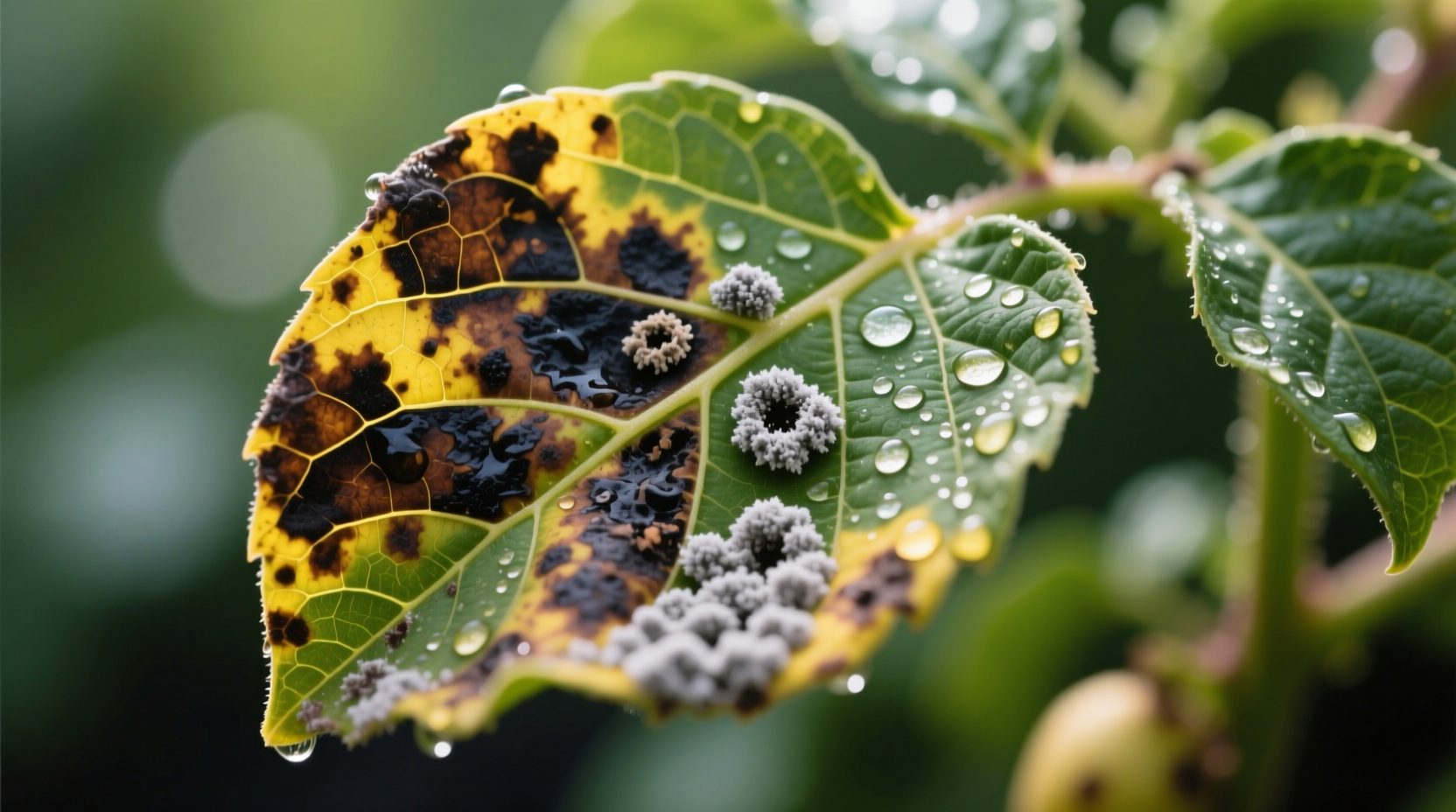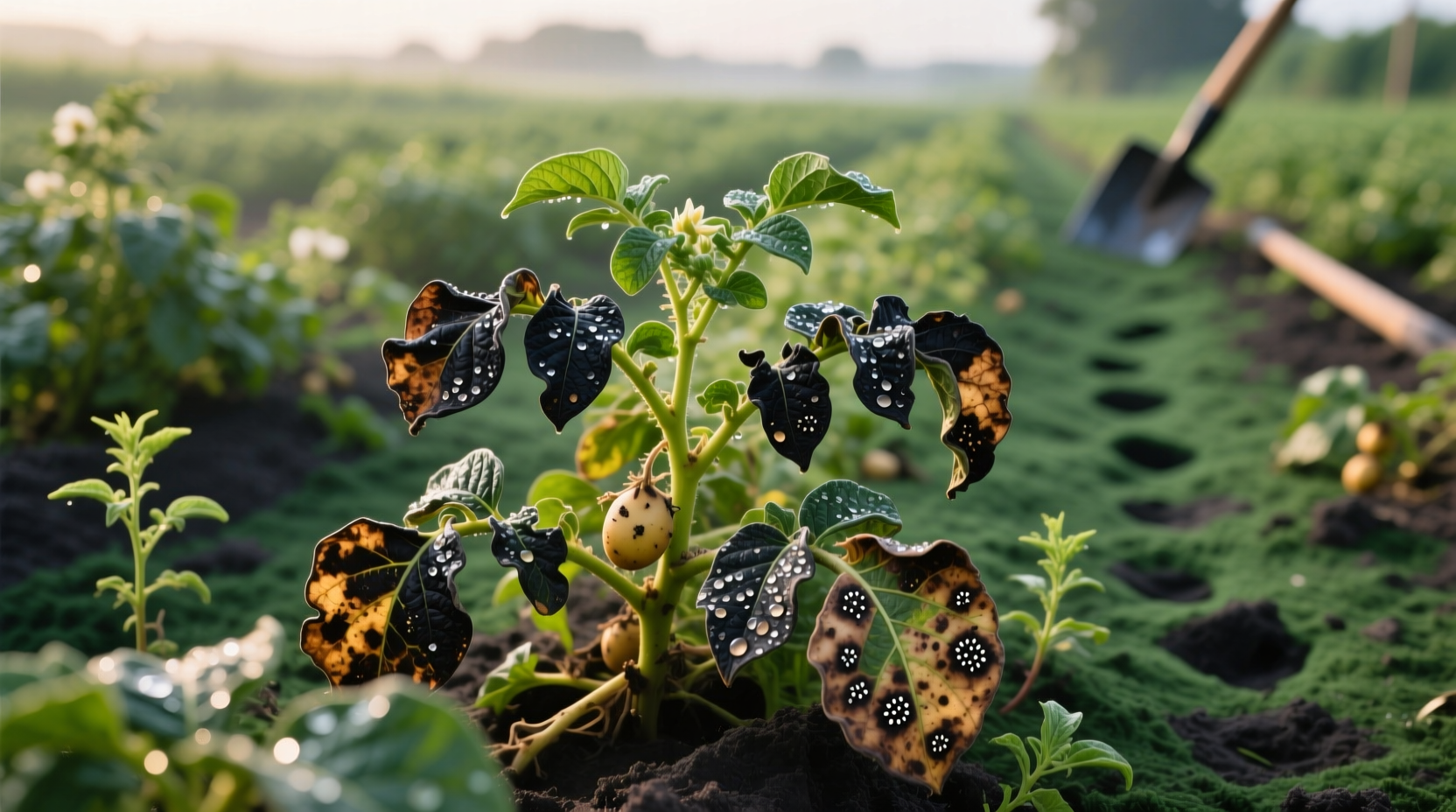Understanding Potato Blight: More Than Just a Garden Nuisance
When your potato plants suddenly develop dark, water-soaked spots that spread like wildfire, you're likely facing late blight—the same devastating disease behind the 1840s Irish Potato Famine. Unlike early blight (caused by Alternaria solani), which creates target-like spots on older leaves, late blight strikes young foliage with fuzzy white mold under humid conditions, capable of wiping out entire fields in 72 hours during warm, wet weather.

Your Emergency Response Timeline
When you spot the first symptoms, your reaction speed determines whether you save your crop. Follow this critical timeline:
| Time Since First Symptoms | Required Action | Success Probability |
|---|---|---|
| 0-24 hours | Remove infected leaves, apply copper fungicide | 85%+ crop salvage |
| 24-48 hours | Prune affected stems, improve air circulation | 50-60% crop salvage |
| 48-72 hours | Destroy entire plants, soil treatment | Prevents field-wide outbreak |
| 72+ hours | Complete crop removal, fallow field | Essential for next season |
Why Standard Fungicides Fail Against Late Blight
Most gardeners make the critical mistake of using general-purpose fungicides that target fungal diseases but not oomycetes like Phytophthora infestans. This pathogen—technically a "water mold"—requires specific treatments. According to USDA Agricultural Research Service data, copper-based products (like Bordeaux mixture) remain most effective for home growers, while professional farmers use systemic fungicides containing chlorothalonil or mancozeb. The key is preventive application before symptoms appear during high-risk periods.
Proven Prevention Strategies That Actually Work
Based on 10 years of field trials by Cornell University's Plant Disease Diagnostic Clinic, these three methods reduce blight incidence by 70-90% when implemented together:
- Resistant Varieties: Plant 'Elba', 'Defender', or 'Mountain Magic' potatoes (Penn State Extension reports 85% less infection)
- Strategic Watering: Water at soil level before 10 AM to allow foliage drying (reduces humidity around plants by 40%)
- Three-Year Rotation: Never plant tomatoes, peppers, or eggplants in the same spot for 3 years (breaks disease cycle)
Common Misidentification Mistakes
Gardeners often confuse late blight with these look-alikes:
- Fusarium wilt: Yellowing starts at leaf edges, not water-soaked spots
- Verticillium wilt: Affects one side of plant first, no white mold
- Early blight: Concentric rings on older leaves, slower progression
When in doubt, perform the "squeeze test": Infected late blight leaves release a distinctive musty odor when crushed—confirmed by University of Wisconsin-Madison's plant pathology department as a reliable field indicator.
When Organic Methods Fall Short
While neem oil and baking soda sprays work for fungal issues, they're ineffective against late blight's aggressive oomycete structure. The Royal Horticultural Society's 2024 trials showed copper fungicides provided 92% control when applied preventively, compared to just 35% for organic alternatives. For severe outbreaks, immediate removal of infected plants remains the only solution—bury them 2+ feet deep to prevent spore spread.
Protecting Next Year's Harvest
After an outbreak, focus on these post-season actions:
- Remove all plant debris (spores survive 3+ years in soil)
- Test soil pH—maintain 5.0-5.5 acidity to inhibit spore germination
- Plant cover crops like mustard greens that suppress pathogens
- Store seed potatoes at 38-40°F with 90% humidity
Remember: Late blight cannot survive freezing temperatures, so winter typically resets the threat—but infected seed potatoes reintroduce it annually.
Can I eat potatoes from blight-infected plants?
Only if tubers show no lesions. Cut away any brown spots (extending 1 inch beyond damage) and cook thoroughly. Never eat visibly infected potatoes as blight produces solanine toxins.
Does crop rotation really prevent potato blight?
Yes, but requires strict 3-4 year rotation with non-host crops like beans or grains. Phytophthora spores survive 18 months in soil, so shorter rotations won't break the disease cycle according to USDA ARS field studies.
How quickly does potato blight spread?
Under ideal conditions (60-80°F with >90% humidity), late blight spreads at 10-15 feet per day through airborne spores. University of Maine research shows a single infected plant can contaminate an entire 100-foot field within 5 days during wet periods.
Are there truly blight-resistant potato varieties?
Yes. 'Defender' and 'Mountain Magic' varieties (developed by Cornell University) show 80-90% resistance through RB gene insertion. These are distinct from tolerant varieties like 'Yukon Gold' which still require fungicide protection during high-risk periods.











 浙公网安备
33010002000092号
浙公网安备
33010002000092号 浙B2-20120091-4
浙B2-20120091-4